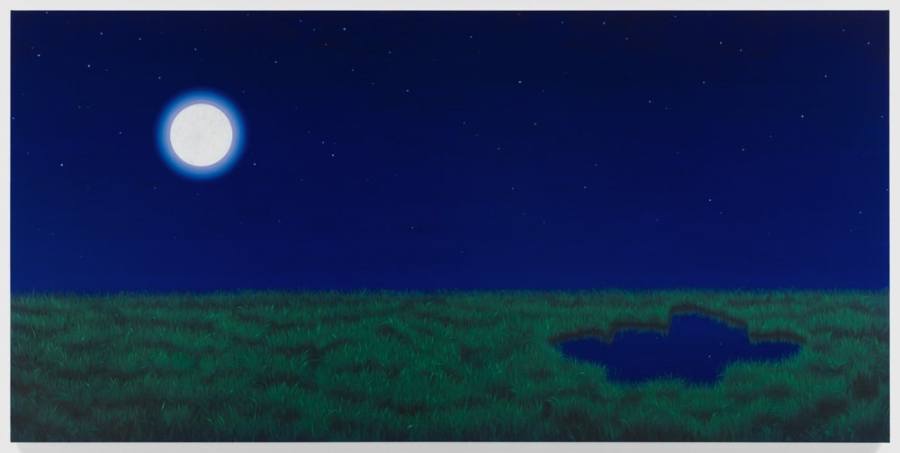January 28, 2016
Download as PDF
View on The New York Times
 The idea of “deskilling” has incited considerable chatter in the contemporary art sphere in the past decade. In economics the term refers to the technically undemanding labor performed by most modern industrial workers. In art discourse it identifies the deliberate rejection of traditional craft in the service of conceptual provocation and expressive freedom.
The idea of “deskilling” has incited considerable chatter in the contemporary art sphere in the past decade. In economics the term refers to the technically undemanding labor performed by most modern industrial workers. In art discourse it identifies the deliberate rejection of traditional craft in the service of conceptual provocation and expressive freedom.
While today’s art abounds in insouciant, apparently slapdash, clumsy, lazy and otherwise deskilled works, not all artists have deskilled themselves. Many are those who you might call — not pejoratively — semiskilled. Their techniques come not from the grand tradition of realistic representation extending from Velázquez and Vermeer to 19th-century academicians like William-Adolphe Bouguereau. Rather, they draw on methods associated with commercial illustration and design in order to play with public signifiers and personal poetics.
“Flatlands,” an engaging small show in the Whitney Museum of American Art’s nicely proportioned lobby-level gallery, presents a dozen works from the past three years by five young (all born since 1980) semiskilled painters. As the exhibition’s organizers, the Whitney assistant curators Laura Phipps and Elisabeth Sherman, observe in an online essay about the show, the artists in “Flatlands” “share an interest in the surface of their works, an attention to the design and finish that is reminiscent of the concerns of pattern or product design.” Fortunately, the show is more interesting, visually as well as conceptually, than this dry characterization seems to promise.
Mathew Cerletty’s highly finished paintings deal cleverly in contradictory illusions. The Magritte-like “Night Puddle” depicts a wide field of lush grass under a dark sky and a full moon. An irregular opening in the grass reads paradoxically as both a watery puddle and as an irregular window to the sky. In “Shelf Life,” Mr. Cerletty fills a 4-foot-by-5-foot canvas with the fourth wall of an aquarium populated by bright little fish, green plants and a glowing purple rock, all against a beautiful, deep-blue background. Mildly psychedelic, it smartly equates the actual painting and the illusory fish tank as hypnotic visual objects.
With a silky-smooth touch, Orion Martin creates mysterious, psychologically charged images that call to mind works by the German Pop-Surrealist Konrad Klapheck and the Chicago Imagist Art Green. “Bakers Steak” depicts a green-glass-shaded brass lamp and a centered quartet of illusory brass rings seeming to perforate the picture. White flowers on serpentine green stems emerge from the darkness within and beyond the rings as if from the painting’s own unconscious. “Triple Nickel, Tull” features a Victorian-style, high-heeled, knee-length boot against a blurry, architectural background. With all its laces and lace holes carefully described, the boot intimates a Freudian, fetishistic vibe.
Jamian Juliano-Villani paints wildly heterogeneous montages of images drawn from all kinds of sources, from scientific illustrations to comic books. “Boar’s Head, a Gateway, My Pinecone” depicts a modern apartment in which a spectral figure draped in black with an animal skull head, a much enlarged blue sea horse and a pine cone are impaled on a giant metal skewer. It’s funny and bizarre like a surrealistic scene in a David Lynch movie. “The Snitch,” in which a scary, long-legged, puppetlike figure constructed from orange-and-white traffic cones strides through an underwater rock garden, could be a child’s nightmare.
The neatly outlined compositions on two large canvases by Caitlin Keogh resemble pages from a morbid coloring book for grown-ups. “Intestine and Tassels” depicts the outline of a woman’s torso with a rendering of the human digestive tract inside and a rope with tasseled ends encircling the shoulders. “Vines,” in which colorful flowers and vines are laid on top of a book open to a picture of a rib cage, similarly meditates on life and mortality.
The show’s biggest, most visually and socially assertive painting is Nina Chanel Abney’s 18-foot-wide “Hothouse.” Made mainly of flattened, stenciled forms in high-contrast colors, it pictures what appears to be a scene in a strip club. Seven women and a man, all nude, provocatively pose amid a flurry of symbols and letters representing an environment of commercialized lust. It’s a terrifically energetic, feminist update of Picasso’s brothel painting “Les Demoiselles d’Avignon.”
It’s noteworthy that all these five painters have B.F.A. or M.F.A. degrees from high-caliber studio art programs. They come from a system that encourages students to reinvent art for themselves and to figure out whatever skills they need to convey with maximal efficiency whatever they have in mind. In that sense, most M.F.A. holders are self-taught. Far from outsiders, however, the good ones are, like the artists of “Flatlands,” acutely wised up semioticians, savvy players with the tropes, memes and cultural politics of the Age of the Internet.



